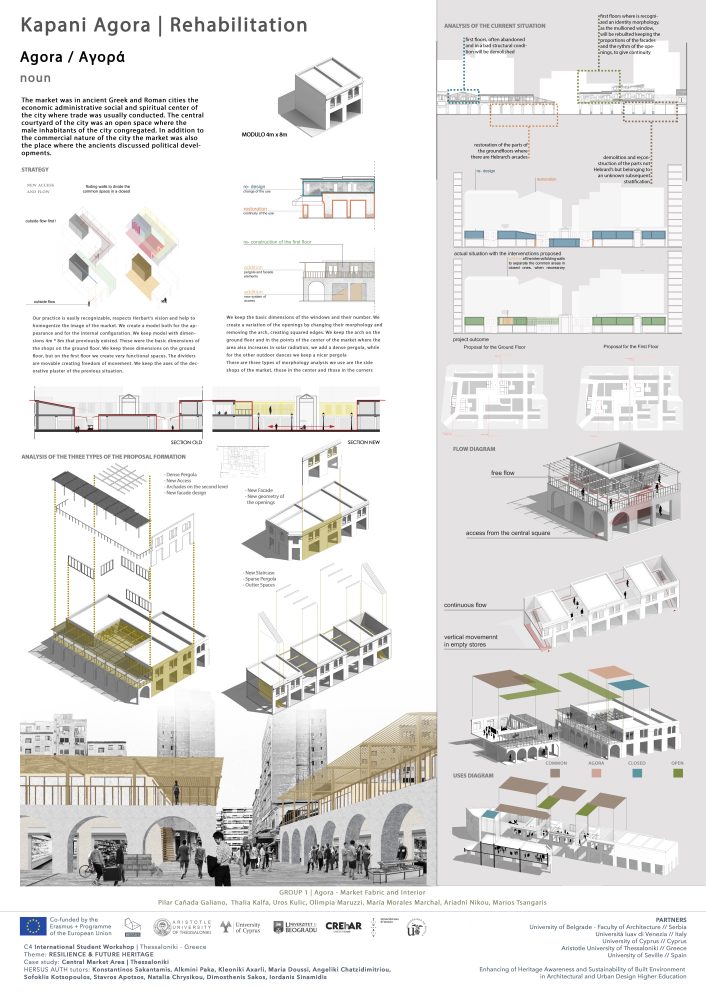Student Workshop 3 - Group 1
Agora - Market Fabric and Interior

Group 1 Output | Agora | A1 Panel
Agora (noun): The market was in ancient Greek and Roman cities the economic administrative social and spiritual center of the city where trade was usually conducted. The central courtyard of the city was an open space where the male inhabitants of the city congregated. In addition to the commercial nature of the city the market was also the place where the ancients discussed political developments. The Kapani Market serves the needs of consumers since the Ottoman occupation, the beginning of the 15th century, and until today the whole area is covered with shops which are open from 05:00 in the morning to 06:00 in the evening. At night there are restaurants that keep the neihboor alive but when someone arrive at the Kapani Market it is inevitable to notice the double character of the place. It is a very warm environment close to the human scale that can make someone traveled to older times. But, at the same time, the Anarchy of the morphology cannot go unnoticed. It is a market that was designed as a homogeneous clear and calm environment by Hebrard and it was turned into a place with unpredictable rhythms, no patterns and lack of continuity. How can we extend the use of the location throughout the whole day? How can we attract young people? How can we integrate our additions to Herard’s homogeneous vision?
Strategy Our practice is easily recognizable, respects Herbart’s vision and help to homogenize the image of the market. We create a model both for the appearance and for the internal configuration. We keep model with dimensions 4m * 8m that previously existed. These were the basic dimensions of the shops on the ground floor. We keep these dimensions on the ground floor, but on the first floor we create very functional spaces. The dividers are movable creating freedom of movement. We keep the axes of the decorative plaster of the previous situation. We keep the basic dimensions of the windows and their number. We create a variation of the openings by changing their morphology and removing the arch, creating squared edges. We keep the arch on the ground floor and in the points of the center of the market where the area also increases in solar radiation, we add a dense pergola, while for the other outdoor dances we keep a nicer pergola There are three types of morphology analysis we use are the side shops of the market, those in the center and those in the corners There are also three types of configuration of space: open, closed and common The external space can be used as an unloading space, a break space, a movement space and as a continuation of the common areas, when these two spaces are in close proximity. In the interior, we create more closed spaces where there are functions that need stricter boundaries such as classes and the laboratory. Common spaces are used as spaces with fluid boundaries. These spaces, mainly on the sides, can be used at the same time by including the open spaces that surround them, thus creating a new experience and a new reading of space